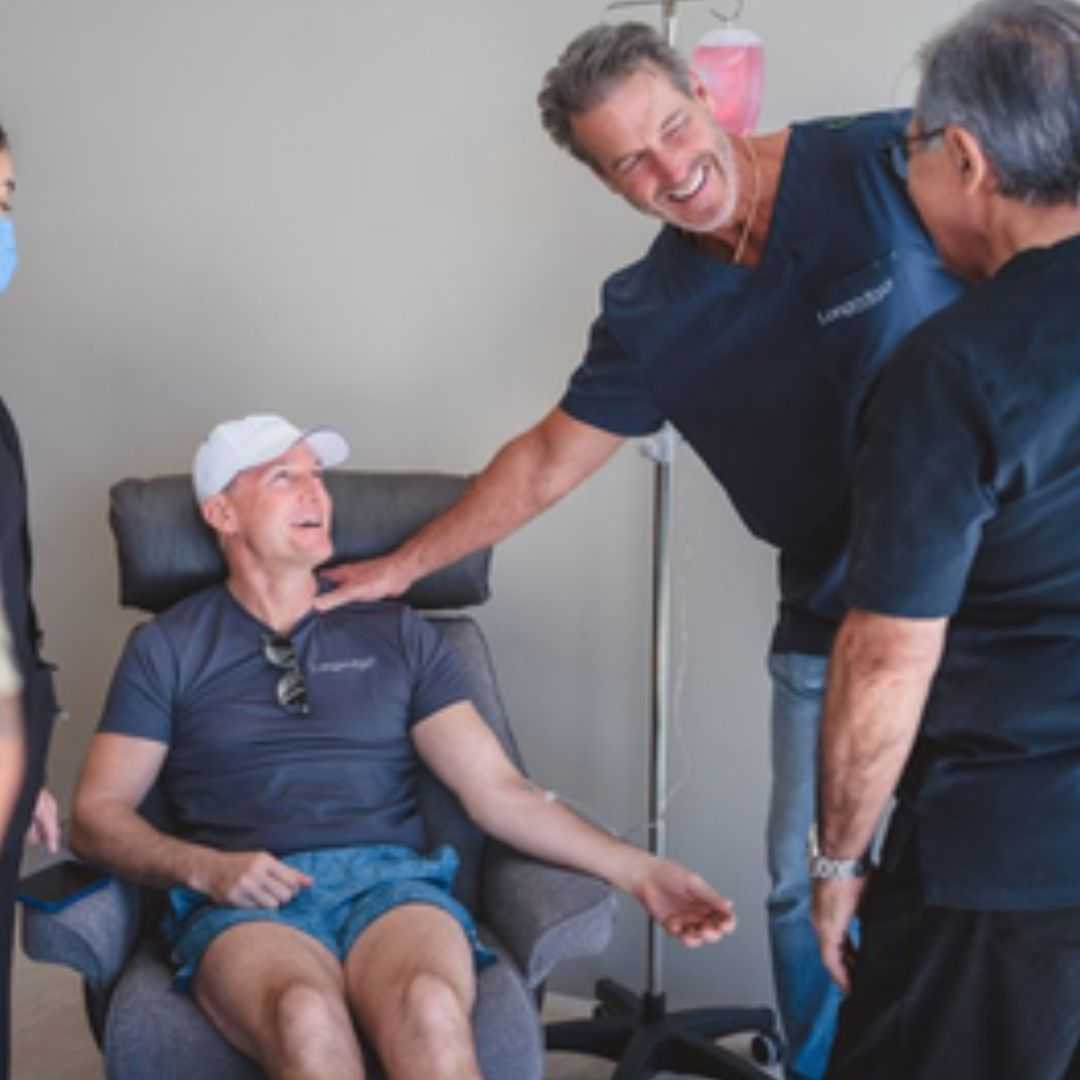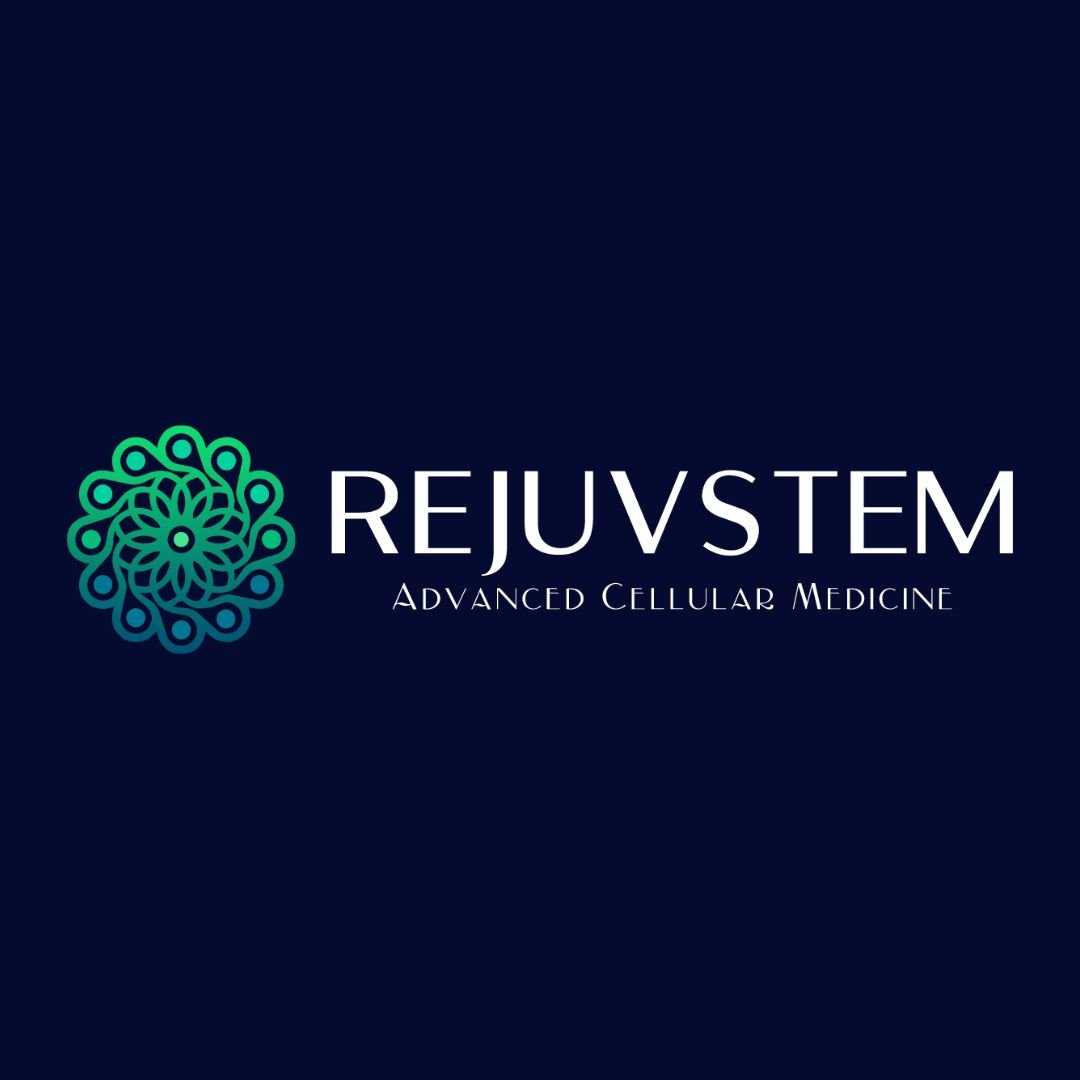Safety Checklist for Stem Cell Eye Injections in Mexico
.jpg)
When considering stem cell injections for eye conditions, the safety of receiving such treatments in Mexico is a complex matter with no simple "yes" or "no" answer. Many individuals explore medical options abroad, often drawn by lower costs or access to treatments not yet available or approved in their home countries. However, it is crucial to approach these options with a clear understanding of the potential benefits, risks, and regulatory landscapes involved.
The field of regenerative medicine, particularly with stem cells, holds immense promise for various conditions, including those affecting the eyes. Yet, much of this research is still in its early stages, especially for many specific eye diseases.
In Mexico, while some clinics maintain high medical standards and employ qualified professionals, others operate with less stringent oversight, offering treatments that lack rigorous scientific validation. This disparity means that the safety of stem cell injections for eyes in Mexico largely depends on the specific clinic, the type of stem cells used, the condition being treated, and the patient's due diligence in researching their chosen provider.
Patients must exercise extreme caution and conduct extensive research to ensure they are making an informed decision about their health.
What are stem cell injections for eyes?
Stem cell injections for eye conditions are a form of regenerative medicine that aims to harness the unique properties of stem cells to repair or replace damaged cells and tissues in the eye. These powerful cells have the ability to differentiate into various cell types and to promote healing and regeneration. The goal of such treatments for ocular conditions is to address underlying cellular damage, which can be a factor in many forms of vision loss.
There are different types of stem cells that might be used, including mesenchymal stem cells (MSCs) derived from bone marrow, adipose tissue (fat), or umbilical cord tissue, as well as induced pluripotent stem cells (iPSCs).
The method of administration can vary, from injections directly into the eye (intravitreal), behind the eye (subretinal), or even intravenously, depending on the specific condition and the clinic's protocol. These treatments are often explored for debilitating eye diseases such as age-related macular degeneration (AMD), retinitis pigmentosa, optic neuropathy, and certain types of glaucoma, where conventional treatments may have limited efficacy.
Are stem cell treatments for eyes approved by the FDA in the U.S.?
In the United States, the Food and Drug Administration (FDA) has a stringent approval process for new medical therapies, including those involving stem cells. For a stem cell treatment to be widely available and marketed in the U.S., it must undergo rigorous clinical trials to demonstrate both its safety and effectiveness.
Currently, the vast majority of stem cell therapies for eye conditions remain investigational and are only available within the context of FDA-approved clinical trials.
This means that if a clinic outside of a regulated clinical trial in the U.S. offers stem cell injections for eyes, it is likely not an FDA-approved treatment. The FDA has issued warnings regarding unproven stem cell therapies, particularly those offered by unregulated clinics, highlighting the potential for serious harm, including blindness, infection, and tumor formation.
Patients considering stem cell treatments should always verify the FDA approval status and, if it is not approved, ensure they understand the experimental nature and associated risks.
What are the potential risks of unproven stem cell injections for eyes?
The risks associated with unproven stem cell injections for eyes, particularly in unregulated settings, are substantial and can be devastating. When treatments are not rigorously tested or administered by untrained personnel, the delicate structures of the eye are highly vulnerable to damage. One of the most severe risks is permanent vision loss or complete blindness, which has been reported in patients who received unapproved treatments.
Other significant risks include:
- Infection: Any injection carries a risk of introducing bacteria or other pathogens into the eye, leading to severe infections that can be difficult to treat and cause irreversible damage.
- Inflammation and Immune Reaction: The body might react negatively to the injected cells, leading to severe inflammation, immune rejection, or even autoimmune responses that further damage eye tissues.
- Retinal Detachment: Injections into the eye can physically damage the retina, potentially causing it to detach, which is a medical emergency that can lead to permanent vision loss if not promptly treated.
- Hemorrhage: Bleeding within the eye or surrounding tissues can occur during or after the injection, impairing vision and causing further complications.
- Uncontrolled Cell Growth/Tumor Formation: While rare, there is a theoretical risk that improperly handled or differentiated stem cells could proliferate uncontrollably, forming tumors (teratomas) within the eye.
- No Therapeutic Benefit: Even without direct harm, there's a high chance that an unproven treatment will simply not work, leading to wasted time, money, and false hope.
Why do people consider stem cell eye treatments in Mexico?
The decision to seek medical treatment abroad, a practice known as medical tourism, is often driven by several compelling factors. For stem cell eye treatments, Mexico has become a destination for many patients, primarily for three main reasons:
- Cost-Effectiveness: Medical procedures in Mexico, including those involving stem cells, are often significantly less expensive than comparable treatments in the United States, Canada, or Europe. This cost saving can be a major draw for patients without comprehensive insurance coverage or those facing high out-of-pocket expenses.
- Accessibility to Experimental Therapies: Due to different regulatory environments, some stem cell therapies that are considered experimental or are still in clinical trial phases in countries like the U.S. may be more readily available at certain clinics in Mexico. Patients with progressive or untreatable eye conditions may feel they have exhausted conventional options and turn to these treatments as a last resort.
- Quicker Access and Shorter Wait Times: Long waiting lists for specialized treatments or clinical trials in their home countries can frustrate patients. Mexico sometimes offers faster scheduling and immediate access to treatments, appealing to those desperate for intervention.
While these factors can be attractive, it is vital to balance them against the potential risks and the importance of regulatory oversight to ensure patient safety and ethical practices.
How can I verify the legitimacy of a stem cell clinic in Mexico for eye conditions?
Verifying the legitimacy of a stem cell clinic, especially for sensitive treatments like those for eyes, requires diligent research. Since regulatory standards can vary, patients must take proactive steps to ensure they are choosing a reputable and safe provider. Here's what you should look for:
- Accreditation and Licensing: Check if the clinic is accredited by recognized international or national bodies. While Mexico's COFEPRIS (Federal Commission for the Protection against Sanitary Risk) regulates medical facilities, additional international accreditations like JCI (Joint Commission International) can indicate higher standards.
- Physician Credentials and Experience: Ensure the doctors performing the procedures are board-certified ophthalmologists or specialists in regenerative medicine, with specific experience in ocular stem cell treatments. Ask about their training, certifications, and years of experience.
- Scientific Evidence and Transparency: A legitimate clinic will be transparent about the scientific basis of their treatments, providing peer-reviewed research or clinical trial data to support their claims. Be wary of clinics that make exaggerated promises or lack scientific evidence.
- Patient Testimonials and Reviews: While not definitive, looking at independent patient reviews and testimonials on reputable platforms can offer insights into other patients' experiences. Be cautious of overly positive or generic reviews.
- Ethical Practices: Evaluate if the clinic adheres to ethical guidelines for stem cell research and therapy. They should provide clear information about the type of stem cells used, their origin, processing, and storage methods.
- Clear Communication: A trustworthy clinic will provide clear, comprehensive information about the treatment plan, potential risks, expected outcomes, and costs, without pressuring you into a decision.
What questions should I ask a Mexican clinic about stem cell eye treatment?
Before committing to any stem cell eye treatment in Mexico, it's essential to ask a comprehensive set of questions to thoroughly understand the procedure, risks, and expected outcomes. This proactive approach empowers you to make an informed decision and assess the clinic's credibility.
Here are some crucial questions to ask:
| Category | Key Questions |
|---|---|
| Treatment Specifics |
|
| Physician & Clinic |
|
| Outcomes & Risks |
|
| Logistics & Cost |
|
What role does medical tourism play in seeking eye treatments in Mexico?
Medical tourism for eye treatments in Mexico is a growing trend, offering both opportunities and challenges. Patients from around the globe travel to Mexico seeking a variety of ophthalmological procedures, ranging from routine eye exams and corrective surgeries like LASIK to more complex and experimental treatments such as stem cell injections. The appeal often lies in the significant cost savings compared to procedures in their home countries, as well as the potential for shorter wait times and the availability of treatments that might not be readily accessible elsewhere.
However, engaging in medical tourism for sensitive procedures like stem cell eye injections requires a heightened level of caution. While Mexico boasts many modern, high-quality medical facilities, it also has a wider range of regulatory enforcement. This means patients must become their own advocates, thoroughly researching not just the medical procedure but also the clinic's reputation, the doctors' qualifications, and the regulatory environment in which they operate. A responsible medical tourism facilitator can help navigate these complexities, but ultimately, the patient bears the responsibility for due diligence.
Are there specific Mexican regulations for stem cell therapies for eyes?
Mexico does have a regulatory framework for medical procedures, including stem cell therapies, primarily overseen by COFEPRIS (Comisión Federal para la Protección contra Riesgos Sanitarios). This body is responsible for regulating health products, services, and establishments. Clinics offering stem cell treatments are generally required to be licensed and meet certain standards for facility, personnel, and quality of care.
However, the application and enforcement of these regulations, especially for novel or experimental stem cell therapies, can sometimes be less strict or comprehensive than in countries with very mature regulatory bodies like the FDA in the U.S. or the EMA in Europe. This can create a grey area where some clinics may offer treatments that are not yet fully proven or widely accepted by international scientific consensus, without facing the same level of scrutiny. Patients should be aware that while a clinic may be "licensed" in Mexico, this does not automatically equate to the treatment being scientifically validated or approved for widespread use by international standards for all eye conditions.
What are alternatives to stem cell injections for certain eye conditions?
For many eye conditions that people consider stem cell treatments for, there are established, scientifically validated alternatives available. It is always recommended to consult with a qualified ophthalmologist about these conventional treatments first, as they often have a proven track record of safety and efficacy.
Some common alternatives include:
- Medications: For conditions like glaucoma, medications (eye drops or oral) can help manage intraocular pressure. For certain retinal conditions, anti-VEGF injections can slow disease progression.
- Laser Therapy: Used for conditions such as diabetic retinopathy, glaucoma, or some forms of retinal tears, laser therapy can help preserve vision or reduce progression.
- Surgical Interventions: Procedures like cataract surgery, vitrectomy for retinal detachment, or corneal transplants are well-established and highly effective for specific conditions.
- Low Vision Aids and Rehabilitation: For individuals with irreversible vision loss, specialized optical devices, magnifiers, and rehabilitation services can help maximize remaining vision and improve quality of life.
- Lifestyle Modifications: For conditions like age-related macular degeneration, dietary changes (e.g., AREDS formula supplements), smoking cessation, and protection from UV light can play a role in slowing progression.
- Participation in Approved Clinical Trials: For those seeking cutting-edge therapies, enrolling in a legitimate, FDA-approved clinical trial in their home country offers access to investigational treatments under strict scientific and ethical oversight.
How do I prepare for medical tourism for eye treatment in Mexico?
Preparing for medical tourism, especially for something as critical as eye treatment, requires meticulous planning and attention to detail. A well-prepared patient is better positioned to navigate the process safely and effectively.
Here’s a checklist to help you prepare:
- Extensive Research: Begin by researching multiple clinics and doctors. Do not settle for the first option. Look for independent reviews, certifications, and affiliations.
- Medical Records: Gather all your relevant medical history, diagnostic tests, and current medication lists. Be prepared to share these with the Mexican clinic for a thorough evaluation.
- Communication: Establish clear communication channels with the clinic. Ensure there are no language barriers; if necessary, inquire about interpreters.
- Travel and Accommodation: Plan your travel, accommodation, and local transportation. Consider the proximity of your lodging to the clinic and emergency services.
- Costs and Insurance: Understand the total cost of the procedure, including all fees, follow-up appointments, and potential complications. Confirm whether your health insurance will cover any portion of the treatment or travel.
- Post-Treatment Care: Discuss post-treatment care and follow-up requirements, both in Mexico and upon your return home. Understand who will manage your ongoing care.
- Emergency Plan: Know what steps to take if an emergency arises while you are in Mexico. Have contact information for the clinic, your embassy, and a local emergency contact.
- Support System: Consider traveling with a companion who can provide support, assist with logistics, and advocate on your behalf if needed.
What support is available for patients considering medical tourism for eye conditions?
Navigating the landscape of medical tourism, particularly for complex and sensitive treatments like stem cell injections for eyes, can be daunting. Fortunately, several resources and support systems are available to help patients make informed decisions and manage the logistical aspects of international healthcare.
Key sources of support include:
- Medical Tourism Facilitators: Companies specializing in medical tourism can connect patients with accredited clinics, assist with travel arrangements, accommodation, and provide interpreters. Reputable facilitators thoroughly vet the clinics they work with, ensuring certain quality and safety standards.
- Patient Advocacy Groups: Organizations dedicated to specific eye conditions or patient rights can offer unbiased advice, connect patients with support networks, and provide information on safe treatment options, including approved clinical trials.
- Online Forums and Communities: Websites and social media groups where patients share their experiences can provide valuable insights. However, it's crucial to approach these with a critical eye, as information may not always be medically accurate or unbiased.
- Second Opinions from Home Doctors: Always seek a second, and ideally a third, opinion from trusted ophthalmologists in your home country. They can provide crucial advice on whether an overseas treatment is appropriate, discuss potential risks, and suggest alternatives.
- Government Travel Advisories: Check your government's travel advisories for Mexico to understand any safety concerns or health recommendations for travelers.
Always remember that while medical tourism can offer viable solutions, thorough research and critical evaluation are paramount to ensure your safety and the effectiveness of your treatment. Be cautious of any clinic that promises miracle cures or discourages questions.
For individuals exploring solutions related to medical tourism and healthcare services for various conditions, including eye treatments, PlacidWay offers a platform to connect with certified clinics and medical professionals worldwide. Explore options, compare treatments, and make informed decisions about your health journey with resources provided by PlacidWay.


.png)














Share this listing